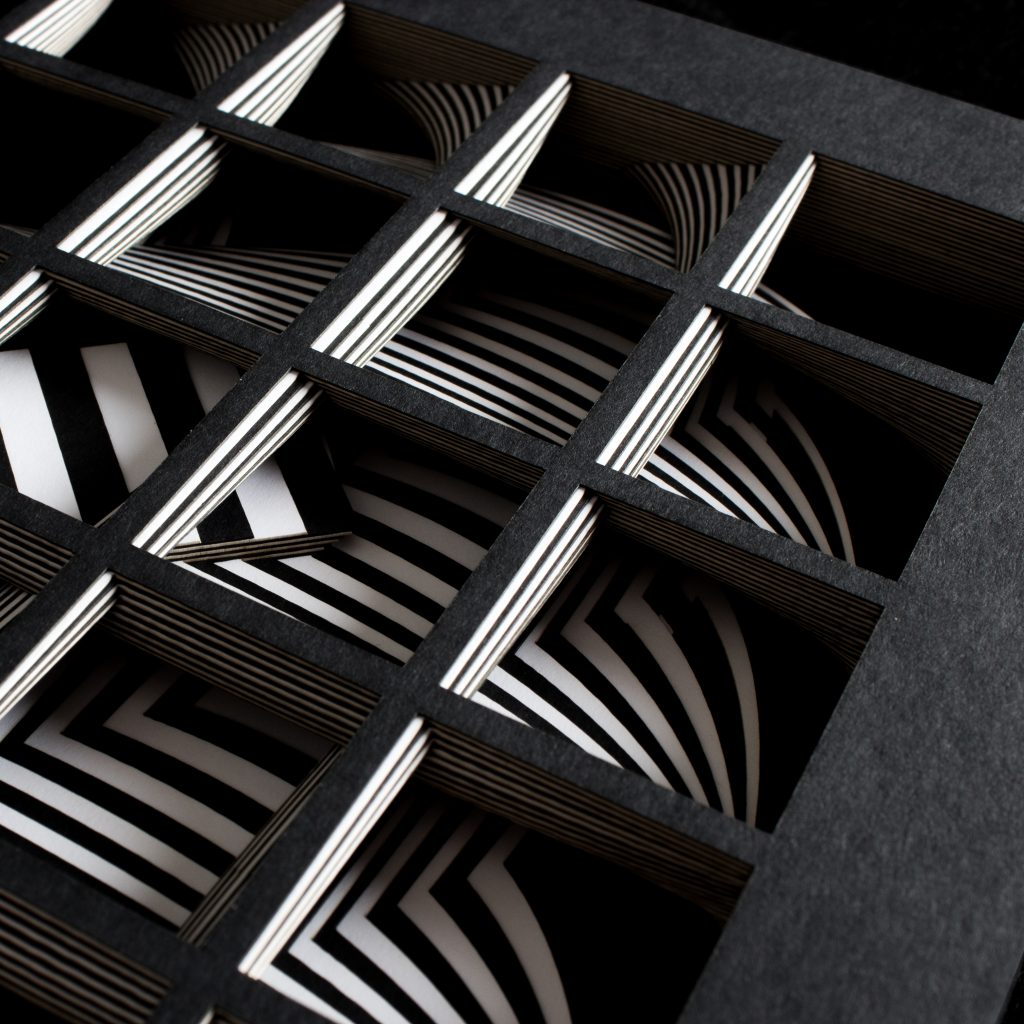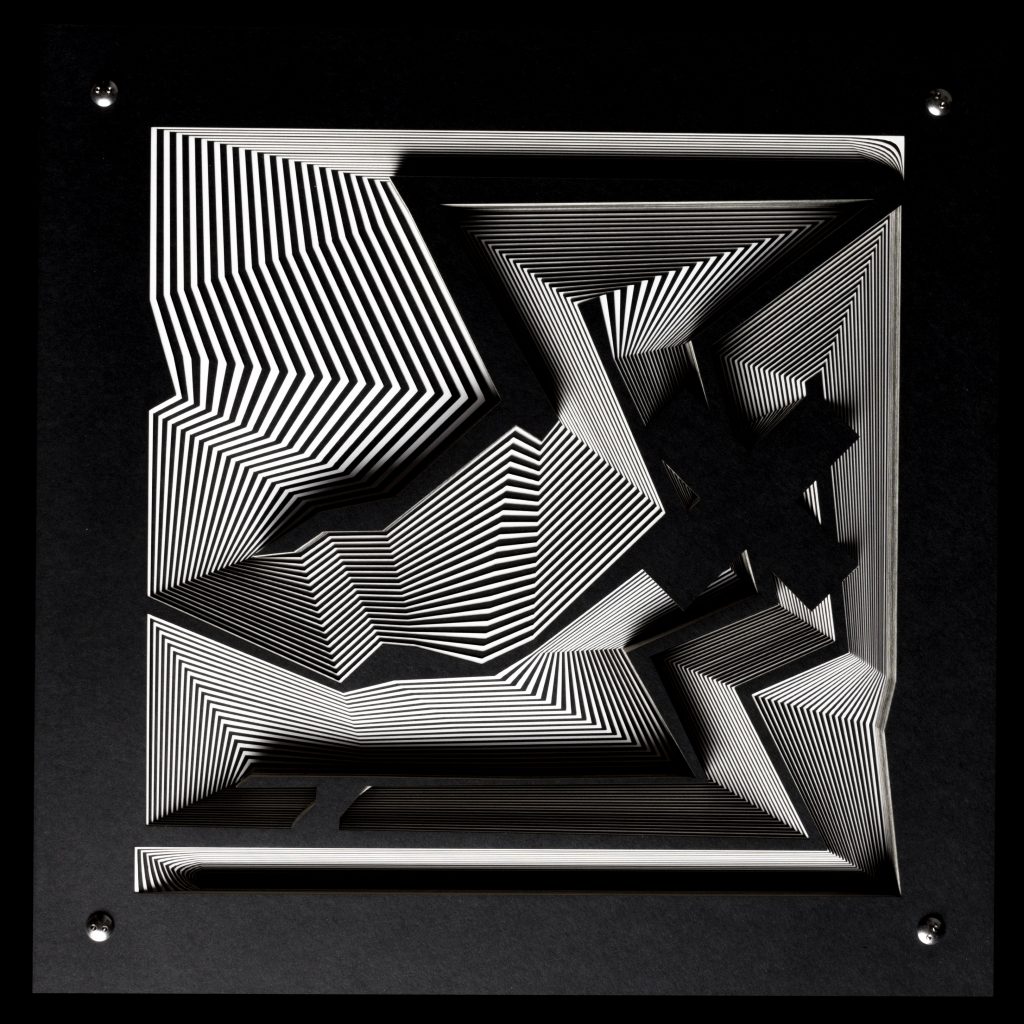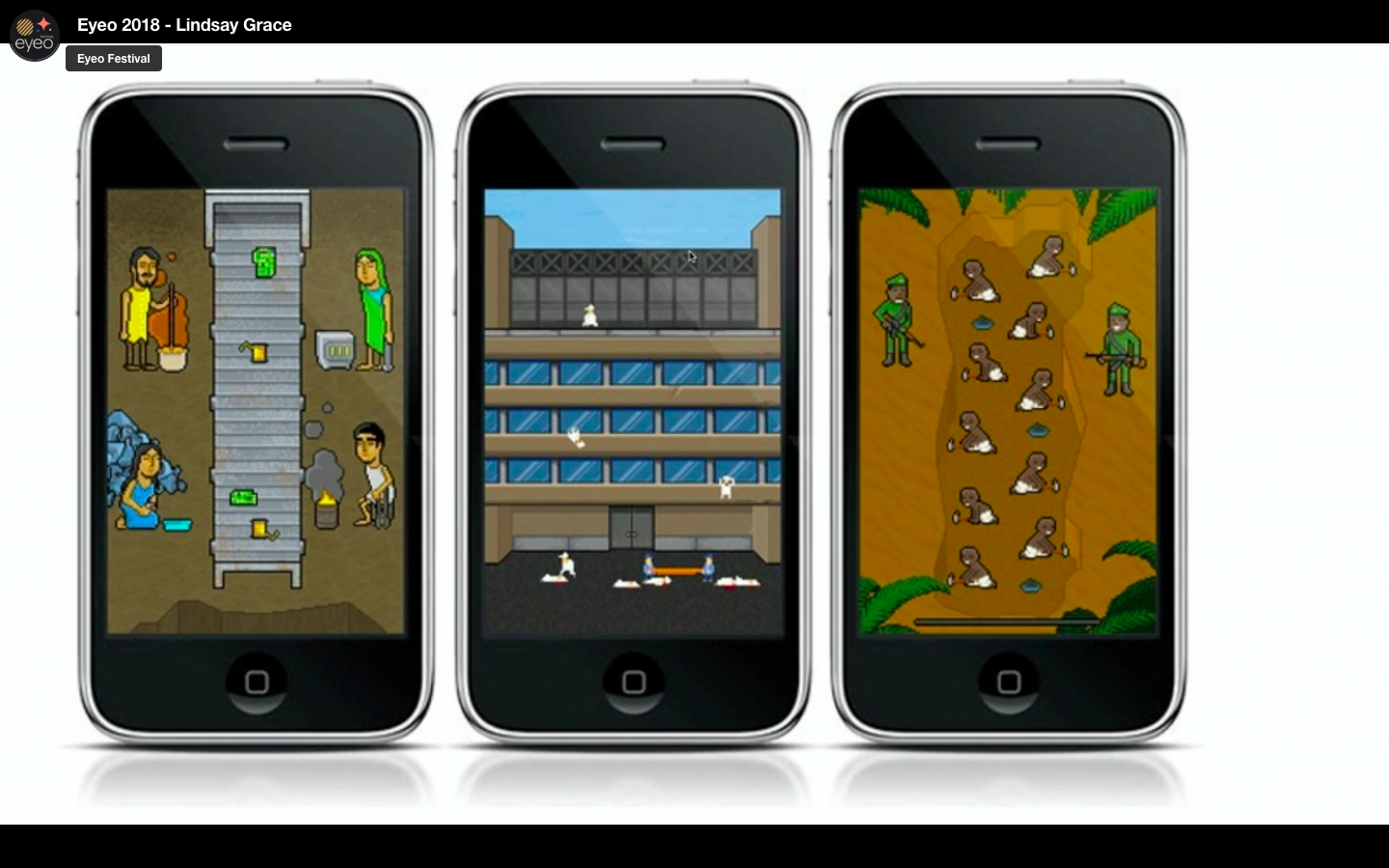Christina Phazero Curlee is a game designer, specializing in emotional impactful and narrative driven Art Games. She describes herself as a “multi-disciplinary game designer” since she works seamlessly in multiple 3D editors, and does script coding, and uses her traditional art foundation in her game design process. She studied traditional art in college and even formerly worked as painte but also she is self-taught in game design, 3D Art, and programming. Her visual art foundation and self-teaching gave her an unusual framework as a game developer as she blends a principle, techniques, and subject matters found in fine arts with game conventions to create her own design style and language in game development.
Her body of work usually explores emotional experiences, marginalized identities, and digital consciousness. I admire her work “Artifacts II” the most as her passion in emotional storytelling is well brought out in this game. Artifacts II is a surreal narrative game about personal discovery and trauma such as chdildhood neglect; The game is set in a surreal storybook-like series of environments, representing memory spaces in the character’s mind. The character engtangles trauma in the mind and body and go through process of introspection and self evaluation as he/she plays. I admire the way she utilizes symbols to convey her personal experiencs, making an game environment conceptually rich, imaginative, and compelling.
To effectively present her work, she uses symbols such as enemies, scores, and timers to represent the concepts of love, fear, and defense mechanisms. Also, Artifact II uses elements of exploration (walking sims), RPG, and survival MDA (mechanics, dynamics, and aesthetics) to effectively reveal the fragments of character’s past memories.
Category: SectionB
Looking Outwards – 08
Deray Mckesson and Samuel Sinyangwe start their talk talking about police violence. Before Twitter, no one was really aware of the police violence in America, and even if they were aware, there was lack of information as to where the police violence was happening as well as how the police were targeting certain individuals. These graphs and collective information wasn’t available to the public and when Twitter came out, certain protesters including Deray Mckesson and Samuel Sinyangwe started to use this to this platform to their advantage and answer these questions using “crowd – sourced” data. They start talking about how there is a strategy to convince people there’s a crisis is different than the strategy to solve the crisis. There is also a difference between being awoke and staying awoke. They called that the Prepared to Win. I admire their awareness on the issue and how they continue trying to fight for what they believe in. Their short quotes begin to help me understand the issue at a small scale but begin to understand what they are really trying to say.
Link to Website (Deray Mckesson)
Link to Website (Samuel Sinyangwe)
LO 08: The Creative Practice of an Individual – Mohit Bhoite
Mohit Bhoite creates free-formed circuit sculptures from a workshop in his home in Minneapolis and more recently in San Francisco. His creative practice and art form is inspired by his love of electronics and robotics. He studied at the University of Pennsylvania and received his MS in Robotics there. His primary job is as an engineer at Particle where he designs and engineers custom circuit boards for the Internet of Things, IoT.
In his spare time, to wind down, he found a love of creating brass sculptures containing circuit boards. These sculptures are elegant in their simplicity. In his day job Bhoite focuses on utility and efficiency for his boards. In his art he focuses on the joy he finds in creating what he calls “useless” projects. I admire his projects because they bring him joy. Bhoite creates for the joy of it. His brass sculptures are clocks, thermometers, light sources, and games. His aesthetic is streamlined, soldered brass rods that emulate satellites, robots, or simple objects. His circuits and displays are connected to the internet and can convey a large amount of information. He likes to put human emotion into his displays rather than raw data. For example, he has an air monitor that displays a robotic happy face when the air is safe. It gets more distressed as the quality deteriorates.
Bhoite presented his process and work at the 2019 Eyeo Festival. He presents his work mostly through photographs, circuit schematics, and source code. He is inspiring because he shares everything about his process and simply wants to share the joy of creation. My favorite project of his is a sand particle generator. It is an LED emulation of falling sand as it is tilted.
Eyeo 2019 – Mohit Bhoite from Eyeo Festival on Vimeo.
Looking Outwards 08: The Creative Practice of an Individual
Nicole Aptekar
http://nicolation.net/
Nicole Aptekar is a paper sculptor and technologist based in Brooklyn, NY. Her works aim to turn basic digital forms into sophisticated, intricate, and elegant physical forms through technologies like “custom software” and “contemporary CNC fabrication methods”. Her works can be considered representations of the transition between the digital and physical forms as well as the transition between the virtual and the real world.
The works of Nicole Aptekar show high delicacy in structures and high craftmanship in the eventual prevented outcome. Her works mainly use the technique of overlay to overlay dozens of papers on top of each other. She makes each piece of paper slightly different than another, thus creating the eventual works not only amazing two-dimensionally but also three-dimensionally. I admire the series “METAFLUX” the most. Because for this series of works, the artist applies the color of black and white to create a marvelous color contrast effect as well.
To present her works, Nicole Aptekar includes high-resolution images to present her work not only two-dimensionally (showing how the works look from the top view) but also three-dimensionally (showing the works from an angle slightly above). She also included zoomed images to show the details. These are very effective strategies that I can learn from when presenting my own work.




Blog 08 – The Creative Practice of an Individual – srauch
I watched Deb Chachra’s talk on architectural biology and biological architecture. Chachra considers herself an engineer rather than an artist; she’s a professor of engineering at Olin College in Massachusetts. While her primary focus is on making engineering more accessible and inclusive, particularly in the realm of where engineering and gender intersect, she also has an interest in where material science and biology intersect. This talk was about the overlaps between biological structures and architectural engineering. As she explains, with architectural calculation and fabrication techniques evolving as they are, we’re approaching being able to create structures that imitate bone that provide the highest possible strength to weight ratio and can “heal” themselves.
Bone-like building structures would be a spectacular example of biomimicry, a branch of design I find fascinating. Biomimicry is the practice of imitating nature to create the most efficient design possible – after all, there’s no better designer than 3.7 billion years of evolution. Because biology and engineering don’t traditionally intersect, it takes someone who is interested in both to ideate such solutions, which is why I admire Chachra’s ingenuity to be crossing fields and embracing the emergent potential. Beyond her work itself, I admired her presentation. She gave a very comprehensive but brief history of architecture, and gave an easy-to-understand but not infantilizing explanation of some of the basic biological processes of bones.
Looking Outwards 08 : Jane Freidhoff
Jane Freidhoff https://janefriedhoff.com/
Studying at Columbia University and Parsons School of Design, and working at places like Google and New York University, Jane Freidhoff is an interdisciplinary artist who primarily makes small-scale video games. These games tend to explore power fantasies, specifically for marginalized groups who have historically (and even now) find disempowered in comparison to the archetypical straight white man. While violence, crime, and outrage are used to punctuate this power grab, the overall aesthetics of Freidhoff’s games are far less dark and intense. That is to say, the intensity within her games are usually found in the bright color palettes and oversaturated imagery, an aesthetic that I was immediately drawn to. This immediate juxtaposition is already quite funny, but that is not where Freidhoff’s sense of humor ends. Whether in scenarios (girls destroying a mall via car), game control (screaming to shoot a gun), or display (being able to win numbers so large that scientific notation is required), Freidhoff brings absurdity and fun to a need for power. That being said, there is a real layer of anger that sits beneath the surface of her work. Heavily inspired by Riot Grrrl, Freidhoff touches greatly on female rage, in addition to her struggles related to her queer and Jewish identities. I think I’m most drawn to Freidhoff’s aesthetics, sense of humor, and ability to tackle issues that I similarly face. The casual, funny, and relatable way she speaks about her work is also appealing to me.
Lecture: https://vimeo.com/287093861?embedded=false&source=video_title&owner=8053320
Looking Outwards 08: Phazero
Christina “Phazero” Curlee is an anti-disciplinary game designer and artist specializing in conveying narratives through interactive environment and level design. They are a MFA candidate specializing in Game Design at the University of Los Angeles and possess a BFA in Digital Art from UT Austin. Currently based in Los Angeles, Christina’s passion for game creation originated from their background in fine arts; initially intending to create interactive installations but finding little success, they began shifting their practice to 3D arts and programming. Christina’s presentation at the EYEO Festival was, in short, eloquent and personable; according to them, what most attracted them to utilizing video games as an artistic medium is the element of play – through interactive, abstract environments and video media capable of evoking multiple sensory responses, they are able to effectively convey narratives that confront challenging topics in a non-explicit manner, taking the player through surreal yet personal experiences in the process. That’s also what I admire most about Christina’s work; not only are they visually captivating and fun to play, they are also narratively rich and artistically confrontational.
To see more of Christina’s work, visit her website: http://www.christinazero.com/
Blog 08: Manuel Lima
By Ilia Urgen
Section B
Manuel Lima is a Portuguese-American designer and author who is known for transforming informational data into various elegant and beautiful forms of art. He received his Bachelor of Fine Arts Degree in Industrial Design at the Technical University of Lisbon and received his Master of Fine Arts Degree in Design and Technology from the Parsons School of Design in New York City.
Lima’s website, Visual Complexity, illustrates his vast portfolio of detailed and intricate artwork, which I find very appealing to the eye. His work often uses a lot of curves and lines, which is made up of many different colors. Yet, each piece of art represents some different form of data. For example, his piece “Marvel Uberframework” (see below) represents the correlation of different Marvel characters, such as Spiderman and Captain America.
However, his most well-known and complex artwork can be found in his literary work, “The Book of Circles: Visualizing Spheres of Knowledge”. As mentioned in his 2017 lecture, Lima shows various artwork pieces represented in many circular forms that comes from any form of data, ranging from ancient to contemporary times. I love how in his lecture, Lima mentions the bridge of knowledge from thousands of years ago to the present, which keeps our well-established society going. He also emphasizes the importance of creating new artwork using data, that can be passed down to future generations.
Link to Lima’s website:
http://www.visualcomplexity.com/vc/


Looking Outwards 08
For this week’s Looking Outwards post I want to introduce video game designer, artist, professor, and writer Lindsay Grace. He is best known as an academic game designer who employs critical design. He currently is a professor at the University of Miami. The part I admire most about Lindsay is his creative use of interactive media and games to explore cultural standards. He is able to design games that are purpose-driven, that includes games that focus on education, social phenomenon, news, etc. A strategy he uses is using cute/simple graphics to represent serious topics like mental health issues, slavery, and environmental waste. He describes this great contrast in his video games as “reminding us the tension in the things we enjoy.” I think this is really effective because every time when we learn about serious subjects we always set the tone to be stern and serious and that would lose the users’ interest easily. On the other hand, if we approach it in a more casual and lighthearted way, it wouldn’t necessarily make the users forget the seriousness of the subject matter but better educate them by having their attention first.

This is the set of games Lindsay mentioned in his lecture.
Link to Lindsay Grace’s website: http://professorgrace.com/
Link to lecture video: https://vimeo.com/channels/eyeo2018/page:4
Looking Outwards / Brian House
Brian House is an accomplished artist working with ‘human and nonhuman systems’ to create works that translate data into visual and audible experiences. He studied at multiple universities, earning degrees in Computer Science and Computer Music/Multimedia [Columbia (bachelors), Chalmers tekniska högskola (masters), and Brown (PhD)], and is currently an art professor at Lewis and Clark College in Portland.
House’s methods of data collection, as well as his productions, are multidisciplinary, focusing not only on the existing rhythms and natural trends of environmental dynamics but on the human impacts on these trends. His work spans past, present, and future, visual art, music, and technology. Much of his work– if not, all– is focused on emphasizing the importance of environmental awareness. Despite being grounded in science and data collection, these works are historically, culturally, and politically aware. When speaking about his work, House tends to provide such context prior to explanations of a given project’s approach, method, objective, and result. His speech for Eyeo 2018 opened with an acknowledgment of the Indigenous land upon which the venue was built. I admire the conscientiousness in both his work and his presentations, as well as the common thread of translating the world around us into something we can hear. House’s projects are extremely powerful, moving, and at the same time, more educational than I had expected.

My favorite project of his is Animas (2017). The objective of this work was to convert the real-time fluctuations of the Animas river’s heavy metal content into audible vibrational tones. Collecting data through water sensors installed in the river, House suspended sheets of the four heavy metals which had surpassed safe levels in the Animas. Each sheet was rigged with a sensor and amplifier which projected the individual frequencies of the metals in correspondence with their level fluctuations in the Animas.

![[OLD SEMESTER] 15-104 • Introduction to Computing for Creative Practice](../../../../wp-content/uploads/2023/09/stop-banner.png)